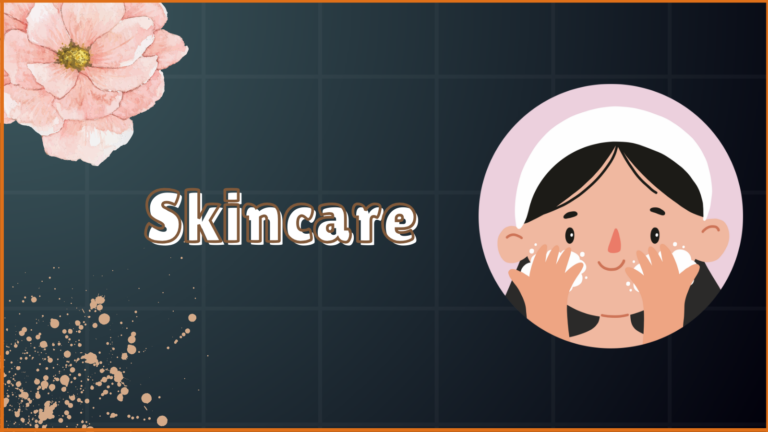A business is a place where people make or sell things to earn money. The purpose of a business is to make money by giving people what they need or want. A side hustle is a way to earn extra income outside of your primary job or main source of income. In this article, I am going to talk about the top 3 business models for side hustles.
- Selling a Product
- Selling a Service
- Selling an Audience
Almost every business you can think of will fall into one (or more) of these categories.
A common question to ask new entrepreneurs when they present their ideas is, “What’s the business model?” This essentially means identifying what is being sold and who will be paying for it. Over the past couple of decades, various business models, including selling a product, a service, or an audience, have been explored. Each model has its advantages and disadvantages, and the choice of which to start with depends on one’s current situation, skills, and goals.
1. Selling a Product
The first business model we’ll discover is selling a product.
Physical products are not the only option for sale today. With minimal incremental costs, digital products such as e-books, courses, and software can be highly profitable side hustles. Additionally, the “hybrid” space between physical and digital goods is worth exploring. Print-on-demand services allow for the sale of physical products without managing inventory directly.
Product Business Examples:
Examples of product businesses include:
- Building an e-commerce store.
- Drop shipping.
- Selling random items on an e-commerce platform like eBay.
- Selling e-books or audiobooks.
- Selling online courses.
- Selling print-on-demand products.
- And so on.
Advantages of a Product Business
Product businesses often offer easier scalability compared to service businesses. This is because the same product can be sold to hundreds or thousands of customers using the same process. In contrast, achieving similar efficiency with a service business across a large number of clients can be challenging, even for experts in systems and processes.
Another benefit of selling products, particularly digital ones, is that it eliminates the need to trade time for money. For instance, once a book is written, it can be sold repeatedly without additional effort. Physical products offer similar advantages to some extent. The greatest advantage of a digital product business is the high-profit margin—delivering an online course incurs almost no cost per additional customer. This scalability and profitability are particularly appealing. Examples of successful side hustles and entrepreneurial ventures in both physical and digital product spaces will be shared.
Disadvantages of a Product Business
For physical products, new entrepreneurs often face challenges with sourcing profitable inventory and managing the cash required to purchase it. Working with suppliers and handling cash flow introduces additional complexity. Additionally, dealing with heavy or bulky items, or shipping products internationally, can lead to logistical and shipping issues.
For digital products, the main drawback is the time required to create the book, course, or software tool. Despite strategies to validate and pre-sell ideas, many entrepreneurs invest significant time only to find there are no buyers.
Summary of Product Business:
Pros:
- Scalability: Sell the same product to many customers with the same process.
- Time-Leveraged: Create once, sell repeatedly.
- Profit Margins: Digital products have minimal incremental costs.
Cons:
- Sourcing and Cash Flow: Challenges in finding profitable inventory and the cash needed upfront.
- Logistics: Managing shipping and inventory, especially with physical products.
- Time Investment: Creating digital products can take considerable time.
2. Selling a Service
A service-based business is often the quickest side hustle to start. There’s no need to create a product, build an audience, or incur significant startup costs. (Avoid the mistake of spending thousands on perfecting a logo, website, or business cards before securing your first customer!) In this model, you offer a service to clients or customers, and they pay for it.

Service Business Examples:
The Side Hustle Show podcast features numerous successful service business examples, including:
- Freelance writing.
- Virtual administrative support.
- Graphic design.
- House cleaning.
- Sales coaching.
- Freelance video editing.
- And so on.
Advantages of a Service Business
The primary advantage of selling a service is the rapid execution. With existing skills, it’s possible to secure a client within a short time frame, sometimes even by the end of the day. The key is to confidently address a specific problem and find someone who needs that solution. Whether it’s a simple service like dog walking or something complex like software development, the business model remains the same. Many side hustlers start in the freelance or service sector for this reason, as it requires minimal upfront investment and allows for quick revenue generation.
Disadvantages of Selling a Service
A common concern with starting a service business is the issue of trading time for money. This is especially true in the early stages, as scaling beyond personal effort can be challenging. However, the goal is to make extra money, not to achieve a massive scale immediately. There are strategies to grow a service business beyond trading hours for dollars, which will be discussed later.
Another pitfall for freelancers is focusing on selling their own expertise rather than the results they deliver. While it’s important to highlight expertise in pitches, emphasizing the outcome for the client can lead to opportunities for outsourcing tasks to subcontractors. Further details on scaling a service business and effective marketing strategies will be covered later.
Summary of Selling a Service:
Pros:
- Speed of Execution: Start with skills you already have and find clients quickly.
- Low Startup Costs: Minimal overhead makes it easy to begin.
- Income Generation: Achieve the “money milestone” swiftly.
Cons:
- Trading Time for Money: Initially, it’s challenging to scale beyond yourself.
- Expertise Trap: Avoid focusing solely on your expertise rather than the results you deliver.
3. Selling an Audience
The third business model to explore is selling an audience. This model is utilized by major companies like Google and Facebook, which generate substantial revenue by attracting large numbers of users and monetizing the audience through advertising.
For side hustlers, a similar approach can be applied on a smaller scale, such as by building a valuable website. As visitors engage with the content, revenue can be earned through ads or affiliate offers. Although ads may not be present, affiliate marketing can provide commissions from user sign-ups or purchases.
In this model, the focus is on leveraging the audience rather than selling a personal service or product. It’s crucial to ensure that selling to the audience does not compromise their trust or value. Additionally, sponsorships, like those on the Side Hustle Show podcast, also rely on this model.
Audience Business Examples
The three main types of audience-based businesses are:
- Blogs or websites.
- YouTube channels.
- Podcasts.
Advantages of an Audience Business
One significant advantage of building an audience-based business is the ability to diversify income streams. Once an audience is established, various products or services can be offered to meet their needs, extending beyond just advertising or affiliate revenue. This flexibility is appealing and allows for the sale of additional services and products.
An audience business also eliminates the need to trade time for money, as it creates an asset that generates income even when not actively working. For example, a podcast episode can reach thousands of listeners at any time, without the need for individual delivery.
Moreover, audience businesses scale more effectively than service businesses. As the audience grows, the rate of new followers or listeners often accelerates, creating a flywheel effect where growth becomes increasingly rapid.
Disadvantages of an Audience Business
The audience business model, while popular, is not suitable for everyone. One major disadvantage is its speculative nature; significant effort may be invested over months or even years without achieving the desired results. Building a valuable resource or body of work requires considerable time and effort, as the audience invests their time rather than just money.
Additionally, there is a risk of becoming overly dependent on a single source of income or traffic. For example, a sudden loss of traffic or income due to changes in advertising policies or affiliate partnerships can have a significant impact. In one instance, a disruption in a Google AdWords account resulted in a substantial loss of traffic and revenue. Similarly, changes in affiliate commission rates, such as Amazon’s reduction in 2017, can affect income and highlight the importance of diversifying revenue streams.
Summary of an Audience Business:
Pros:
- Flexible Monetization: Multiple income streams from services, products, and ads.
- Time-Leveraged: Content reaches thousands without additional effort.
- Scalability: Audience growth creates a compounding effect.
Cons:
- Speculative: Requires significant effort with no guaranteed success.
- Income Reliance: Potential over-reliance on one source of income or traffic.
- Slow Path to Revenue: Building a substantial audience takes time.
Conclusion
In summary, each business model offers unique advantages and challenges, making it essential to choose one that aligns with your current situation, skills, and goals. Selling a product provides scalability and high profit margins, especially with digital goods, but may involve significant time and cash flow challenges. Offering a service allows for quick start-up and low initial costs, though it may require trading time for money and overcoming the expertise trap. Selling an audience presents opportunities for diverse revenue streams and scalability, but can be speculative and dependent on traffic and income sources.
Ultimately, the best approach will depend on your personal strengths, resources, and business aspirations. By understanding these models, you can make an informed decision and strategically position yourself for success in your side hustle. Whether you choose to sell products, services, or leverage an audience, each path has the potential to provide rewarding opportunities for growth and income.




